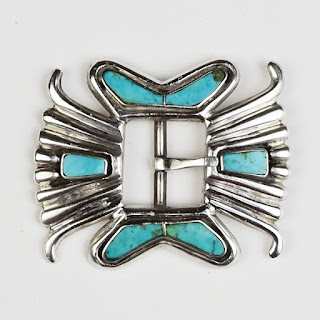The word "important" is used far too often in the art world in general, and the Southwestern Indian silverwork world in particular. Importance is a very subjective concept, and what makes something "important" is very hard to define. Is a piece "important" because it is early? Or because someone who is now famous made it? The answer to both may well be yes, but not necessarily. Early pieces can be minor and unimportant, and not everything made by a famous artist can be considered a masterpiece. How about if a piece is pictured in a book, or displayed in a major museum? Again, maybe, but maybe not.
But what if something combines all of these things? If that is the case, then calling it "important" is probably not a stretch. It is not often that such a confluence of factors occurs, and it is notable indeed when something does indeed check all the boxes. Something like that just happened in Turkey Mountain Traders' inventory, and we are excited and proud to tell everyone about it.
First, a bit of background. One of the most common questions we are asked involves hallmarks, and when they came into use in the American Indian Southwest. It is a known fact that, left to their own devices, early Indian silversmiths did not use hallmarks until the mid-1920s, and infrequently even then. After much coaxing by traders and patrons, hallmarks came into more common use in the 1930s and 1940s, and today it is unusual for an Indian smith to not hallmark their work. The absolute earliest that a hallmarked piece can be found with a solid date is 1925, and that piece is shown below:
 Very slightly different, but clearly by the same hand using the same techniques (casting and channel inlay) and done at the same time. And how about a hallmark?
Very slightly different, but clearly by the same hand using the same techniques (casting and channel inlay) and done at the same time. And how about a hallmark?

